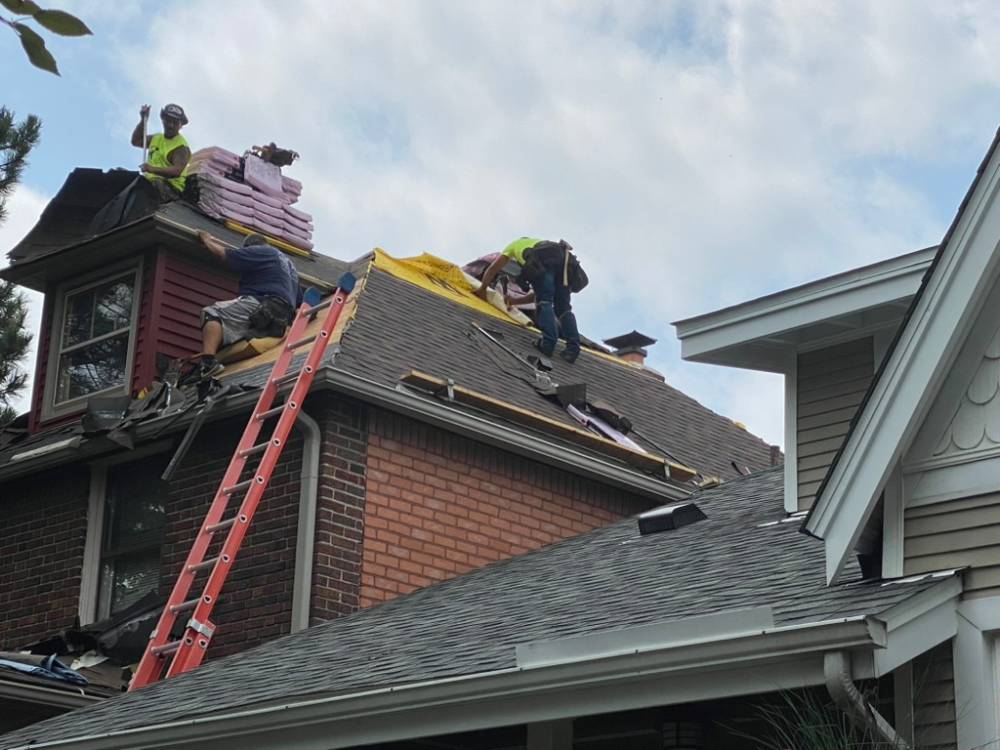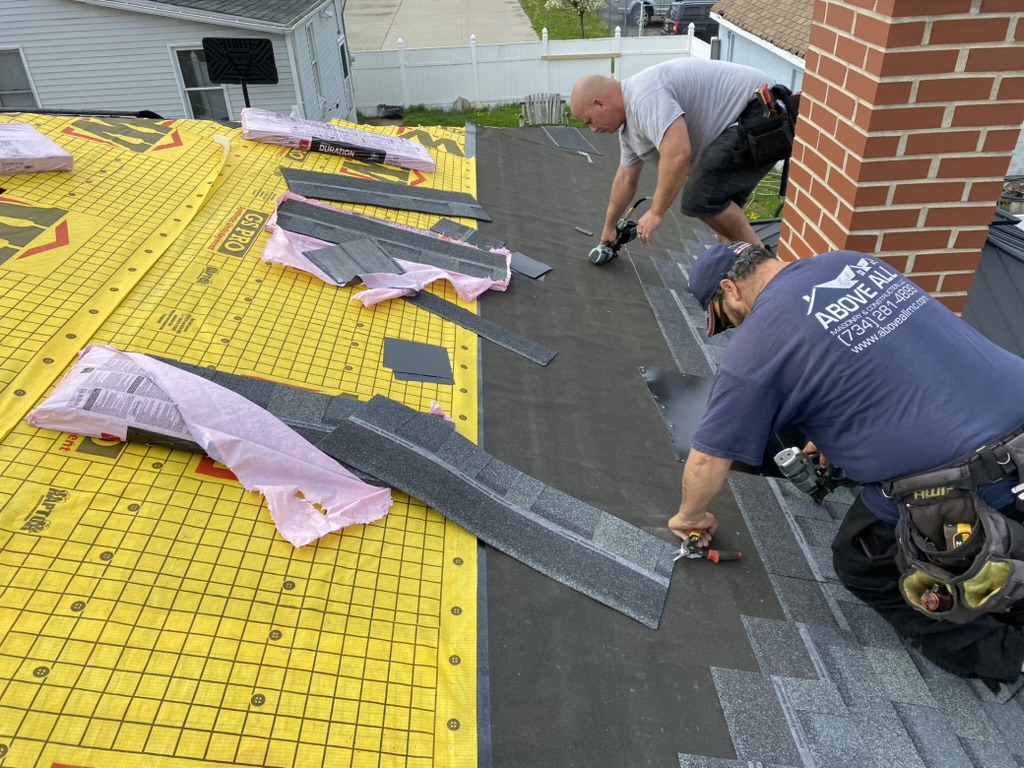
Commercial Roofing in the Downriver area of Michigan
Above All Masonry and Construction provides expert commercial roofing services including installation, leak repairs, re-roofing, flat roofs, flashing & dams.

Qualified Roofing Team Members
Above All Masonry & Construction LLC. takes the worry out of choosing your roofing contractor! With over 25 years experience in the construction field we use only the best materials and use only qualified team members to install it! We stand behind all of our jobs 100% and guarantee that you will be satisfied with the job we have done.
Roof System Components
All steep-slope roof systems (i.e., roofs with slopes of 25% grade or more) have five basic components:
Roof Covering – shingles, tile, slate, or metal underlayment that protect the sheathing from weather.
Sheathing – boards or sheet material that are fastened to roof rafters to cover a house or building.
Roof Structure – rafters and trusses constructed to support the sheathing.
Flashing – sheet metal or other material installed into roof system’s various joints and valleys to prevent water seepage.
Drainage – a roof system’s design features, such as shape, slope and layout that affect its ability to shed water.
Choosing a Roof System
There are a number of things to consider when selecting a new roof system. Of course, cost and durability head the list, but aesthetics and architectural style are important, too. The right roof system for your home or building is one that balances these five considerations. The following roofing products commonly are used for steep-slope structures.
Asphalt shingles, wood shingles and shakes, tile, slate, metal, and synthetic.

What is Ice Dam?
Ice dams can occur when heavy snow builds up on a roof. Roof overhangs are the coldest part of the roof because they extend out past the walls of your home. For this reason, ice build-up usually occurs around your overhangs and gutters, while snow on the rest of your roof may melt.
Ice dams can also be found at the rooflines of built out windows such as bay, bow or garden windows. Often, people mistake water infiltration from ice dams for leaking windows. There is a simple way to identify the difference; if the window only leaks in the winter, and doesn’t leak in the summer rain, the problem can be properly identified as an ice dam.
Ice dams are formed by temperature changes after snow falls. During the warmer hours of the day, some of the snow from your roof melts, and gravity directs the water to flow towards the ground. The water then refreezes when temperatures later drop, forming an underlying ice barrier. This ice barrier is generally located at the bottom of the roofline where it meets the overhang; this is called the freeze line. Once an ice barrier forms at the freeze line, the daily warming cycle is not sufficient to melt through it, and any subsequent melting snow cannot flow away from your home through your gutters. This water then backs up underneath shingles, damaging the attic, ceilings, and walls.
Three things are required for an ice dam to form:
Snow, Heat to melt the snow, and Cold to to refreeze the melted snow into solid ice.